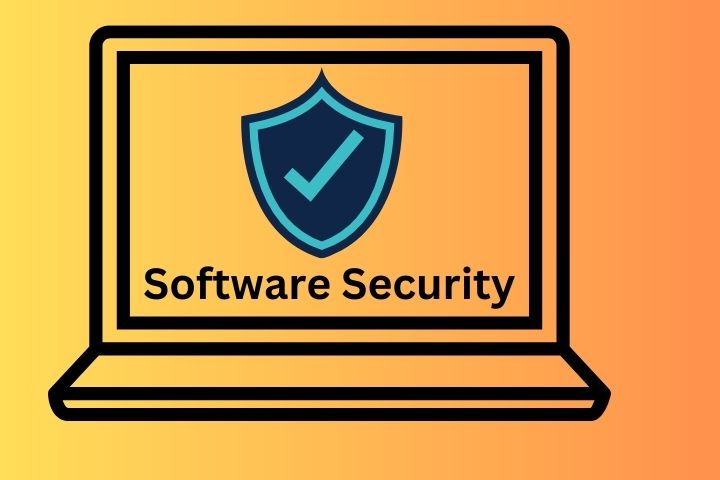
Modern companies use more and more software programs for important tasks. As they implement more and more digital solutions, software security threats are increasing in strength and frequency, and viruses, malware, and other threats can compromise confidential data.
Your business needs to ensure it has the strongest possible software security. In this blog post, you will find a brief explanation of what software security means, why it is important and how to implement, review and improve your protocols.
Definition:
It is a set of practices designed to protect software applications and digital solutions from attackers. Developers implement these techniques during software development and testing processes to ensure digital solutions remain secure and work despite dangerous attacks.
Why it is so important?
Secure software development is essential because people will always be out to misuse business data. As businesses become more dependent on software, these programs must be safe and secure. With strong software security protocols implemented, you can prevent attackers from stealing potentially sensitive information, such as credit card numbers and trade secrets, and build trust with users.
The theft of important data can be devastating for customers and the companies themselves. Malicious actors can misuse sensitive information and even steal user identities. In addition, companies can be fined and suffer reputational damage if data is compromised.
Organizations can do a lot to protect their critical data by incorporating techniques into their development cycles. Companies can proactively identify system vulnerabilities and better protect their software by implementing security techniques.
What is the difference between software security and cyber security?
While “software security” and “cybersecurity” sound very similar, they describe two very different concepts. Software security protects or secures software programs from viruses or malware.
Cyber security is a broader field, also known as computer or information security, designed to protect networks, systems and programs. Cyber security threats also include Trojans and ransomware attacks.
Issues
In today’s complex IT environment, software is a more prevalent core component than ever. However, related security issues are just as common, so software security must be a priority.
Security as a software problem
Businesses rely on software to manage their finances, sell products, monitor customer data, collaborate on projects, and communicate with team members. With so much business activity happening through digital channels, they must be protected.
System vulnerabilities are security flaws or exploitable locations in software code. Hackers can exploit these vulnerabilities to access software programs, steal valuable data, and disrupt important systems.
Security must be integral to the software development and testing process to prevent this. Developers can incorporate security best practices into these processes, uncovering and remediating vulnerabilities before hackers get a chance.
Software security issues
A security vulnerability can severely impact healthcare providers, financial institutions, homeland security agencies, and others. Therefore, these issues must be addressed quickly and proactively to forestall attacks.
Below are some of the biggest issues encountered in organizations:
- Phishing: An attacker impersonates someone to obtain personal information, such as software credentials.
- DDoS attacks (Distributed Denial-of-Service): Here, attackers overload the servers with data packets, which causes the software to crash.
- Cloud Service Attacks: Organizations increasingly use cloud-based services to support remote workers. However, some cloud infrastructures have vulnerabilities that hackers can exploit.
- Software Supply Chain Attacks: Some software components are essential to the business supply chain, particularly in e-commerce. In a software supply chain attack, hackers exploit an external service to obtain data about the company.
Tools and Responsibilities
Developing secure software requires the collaboration of many stakeholders. Everyone responsible for software development, from developers to business leaders, must understand software security’s benefits. At the same time, they also need to know the risks if software security needs to be implemented and adequate resources are allocated for security tasks.
Organizations can use several tools for software security:
- Static Application Security Testing:Examines the source code and highlights vulnerabilities developers fix.
- Dynamic Application Security Testing:Checks application code as it runs and reveals vulnerabilities in the software.
- Software Composition Analysis:Looks for violations of company software governance policies; this is especially important for open-source software.
- Mobile Application Security Testing:Analyzes mobile application code and uncovers specific vulnerabilities that can lead to specific security risks, e.g. B. Impermissible platform use and insecure data storage.
Best practices
Malicious users attack vulnerable software components to access, abuse, or disrupt programs. However, safe software development can help to avoid these incidents in the first place. Below are some best practices for implementing, ensuring, and enhancing software security.
Implementation
Basic security best practices must be implemented from the very beginning of development. Here are some examples:
- Implementing the principle of least privilege: Least privilege refers to restricting access rights for program users. A successful hacker can only abuse the capabilities, privileges, and controls the hacked user has, so the attack’s damage is contained when this principle is followed.
- Software Data Encryption: Data encryption converts data into a protected, unreadable format. Even if a hacker can access this information, they can’t do anything with it unless they have the encryption key. Be sure to encrypt all stored and transmitted software data.
- Automate tasks related to software security: It can be difficult to monitor your entire infrastructure for vulnerabilities. Therefore, investing in security software that takes on these tasks makes sense. Automation reduces human error and extends the coverage of your security protocol.
- Implementing two-factor authentication: This security protocol requires users to provide two types of information to log into their accounts. The second piece of information can be, for example, a code that is sent to your smartphone via SMS. That way, even if hackers get the first set of credentials, they can’t access the system.
- Employee Training: All employees must understand the importance of software security and how to protect themselves and their data. The teams responsible for software security can hold regular training courses to keep all employees up to date.









